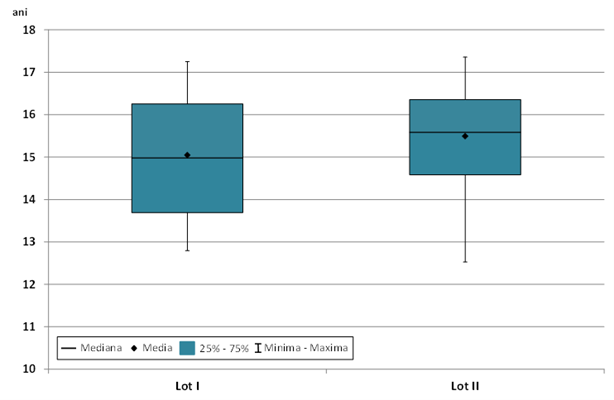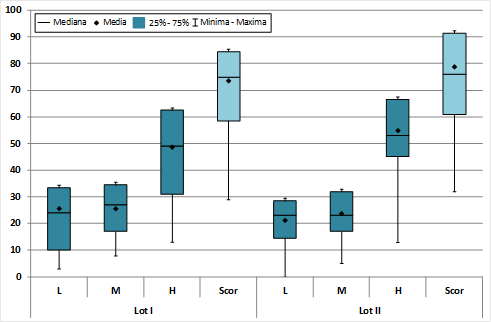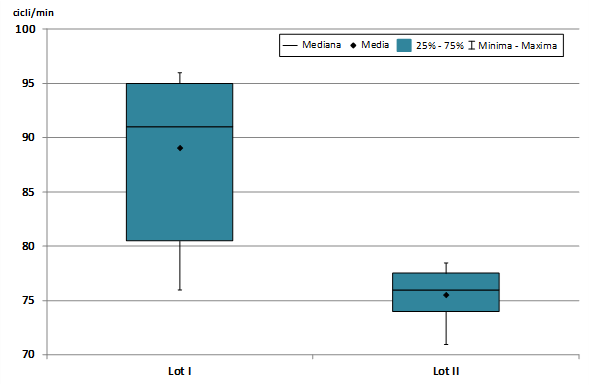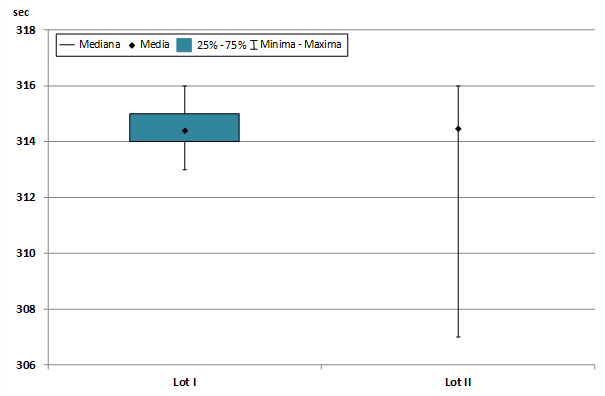Abstract
Keywords: Biathlon -skiingstressanxietycardiac rhythmsport performance
Introduction
According to Bakhsipour & Dejkam (2006), when the result of our work in training, at school or in other activities is appreciated positively, we are experiencing positive emotions. On the contrary, when the positive effect is low, we have negative emotions.
Meanwhile, people with negative affects tend more to dissatisfaction, have a negative attitude towards themselves and are considered dissatisfied, due to Simmons, Stein & Winkielman, Marti, (2008). Emotions take different forms of status or quality. In the state form, positive affects are a person´s enthusiasm for life, proactivity, and as tuteness. Positive emotions are expressed in states of enthusiasm, decision, self-confidence. Negative emotions are expressed by: anger, disgust, hate, fear. In order to achieve emotional stability, we need to know how to achieve an emotional adjustment through the harmony of emotions and activities (Rushworth, Mars & Summerfield, 2009).
Problem Statement
We intended to improve the performance of athletes and to monitor the dysfunctional negative emotions during the competition, with the reduction of stress and anxiety in the ski-biathlon. The first test was conducted in February 2015, the age of the subjects being between 12 ± 17 years, a number of 15 athletes in both groups I and group II, the mean age being 15.05 years for the subjects of the first group and 15.49 for subjects in Lot II. The second test was held in February 2016. Competition anxiety and stress is the major problem faced by most performance athletes: stress and performance anxiety before some competitions. This can affect quite a lot the performance during the sports competition and can even lead to a real failure, despite the efforts and the profound exercise beforehand. Being part of a complex system of methods and techniques designed to improve the mental capacity of the individual, mental training is conditioned by several techniques that ensure either the orientation or the conditions of the practice, or the more efficient use of the results (Grosu, 2015).
Research Questions
Methods
We used a device called EmWave2, which is a bio-feedback and gives us information about physiological indicators of the body: heart rate. EmWave technology is based on the discovery of consistency. Consistency is a state of synchronization between the heart, brain and central nervous system. The system follows three levels of consistency: low (red), medium (blue), high (green). These appear as colored lines under the heading "Ratio of consistency," see the chart below.
Essentially this technique can quickly bring the heart rate into coherence. Consistency is a term used by scientists to describe a highly effective physiological state in which the nervous, cardiovascular, hormonal and immune systems work together efficiently and harmoniously. By practicing the state of coherence, the whole body can relieve stress, heal emotional trauma, worry and exaggerated fear, and as it is practiced, there is an increasing improvement in general health.
Purpose of the Study
Research Methods
Methods: we used a device called EmWave2, which is a bio-feedback and gives us information about physiological indicators of the body: heart rate. EmWave technology is based on the discovery of consistency. Consistency is a state of synchronization between the heart, brain and central nervous system. The system follows three levels of consistency: low (red), medium (blue), high (green). These appear as colored lines under the heading "Ratio of consistency," see the chart below.
Mostly this technique can quickly bring the heart rate into coherence. Consistency is a term used by scientists to describe a highly efficient physiological state in which the nervous, cardiovascular, hormonal and immune systems work together efficiently and harmoniously. By practicing the state of coherence, the whole body can relieve stress, heal emotional trauma, worry and exaggerated fear, and as it is practiced, there is an increasing improvement in general health.
Findings
Findings and Results
By using this tool we have succeeded in improving the overall health of athletes, optimizing the performance capacity of the athletes involved in the experiment by increasing learning speed and concentration power by achieving a superior level of emotional balance.
In other work, the authors have offered evidence from time-resolved electrophysiological signals in humans linking perceptual learning with post-sensory processing during a perceptual categorization task. Specifically, we showed that improvements in behavioral performance were accompanied primarily by late enhancements in decision-related evidence. (Diaz, Queirazza, & Philiastides 2017).
Positive emotions may lead to the increased emotional adjustment. Watson (2000), cited by Tellegen, appreciates that different positive or negative emotions accompany depression and anxiety.
It has been found that certain negative affections are correlate with certain psychiatric disorders (Zakiee & Rostami, 2013). In people with negative emotions, certain mental disorders affect the emotional state. Self-control and emotional intelligence issues are related to emotional regulation, which helps the person to adapt to the environment through correct reactions (Pankratova, 2010).
The Shapiro-Wilk test was used to test normal distribution. For normal distribution data, the t (Student) test was used, and for non-uniform distribution values or ranks, non-parametric Mann-Whitney (U) tests for non-paired samples were used, or Wilcoxon for two pair samples. For the analysis of three or more samples, the ANOVA test was used for normal distribution data or Kruskal-Wallis nonparametric test for non-uniform distribution values or ranges.
Findings show that the application of mental training techniques leads to lower anxiety issues.
No statistically significant differences between the two batches (p> 0.05) were observed in the statistical analysis of the values of the EmWave2 test score.

In the statistical analysis of the values of the EmWave2 levels, taking into account the three levels of consistency, we observed: in lot I - very significant statistical differences between at least two of the levels (p <0.01). In lot II - statistically significant differences between at least two of the levels (p <0.001).
In the statistical analysis of the values of the EmWave2 test levels were observed: in lot I - very significant statistical differences between the LH, MH (p <0.01) levels and the lot II - statistically significant differences between LH, MH (p <0 ,01).
In the statistical analysis of the values of the EmWave2 test levels, taking into account the three levels of consistency, we observed:
in lot I - very significant statistical differences between at least two of the levels (p <0.01)
in group II - statistically significant differences between at least two of the levels (p <0.001).
The statistical analysis of the values of the EmWave2 test levels showed:
in lot I - very significant statistical differences between L-H, M-H levels (p <0.01)
in lot II - statistically significant differences between L-H, M-H levels (p <0.01).
No statistically significant differences between the two batches (p> 0.05) were observed in the statistical analysis of the values of the EmWave2 test score.



The statistical analysis of the correlation between the score values and the FC averages in the EmWave2 test showed:
in Lot I - an acceptable correlation between the two indicators
in Lot II - the lack of a correlation between the two indicators.
Discussions
In statistical analysis of mean heart rate values (mean FC) recorded in the EmWave2 test, statistically significant differences were observed between the two groups (p <0.001). In the statistical analysis of the time values in which the EmWave2 test was performed, statistically significant differences were observed between the two groups (p <0.01).
When athletes face stressful emotions such as tension, anxiety, irritation, or anger, the pattern of heart rhythm becomes irregular and incoherent, which negatively affects the health, brain function, performance and feeling of well-being. When athletes face positive emotions such as appreciation, care, joy and love, the heart rate model is more ordered and consistent.
We consider that software usage will increase the improvement of precision in order to determine the level of space orientation according to the manual laterality of sportsmen. There have been relatively poor attempts to implement artificial intelligence techniques in sports that can determine and influence the motoric performance (Bădău, 2011).
The strength of such representations is modulated by dynamic updates of category-specific perceptual weights based on feedback information, thereby accounting for potential differences in learning trajectories between the stimulus categories.
Indeed, compared with previous work that used a single stimulus-invariant perceptual weight Law & Gold (2009), the introduction of category-specific perceptual weights is designed to capture subject-wise choice biases, in that subjects might have a choice bias towards cars or faces and likewise might display an increasing ability to recognize cars or faces throughout the task, (Kahnt Grueschow, Speck & Haynes, 2011)
The other study with their results imply that perceptual learning involves an enhanced readout of sensory information during decision-making, probably through a process similar to reinforcement learning, endorsing the view of a domain general learning mechanism (Rushworth, Mars & Summerfield, 2009).
The more psychological intervention and assistance is more specialized and more objective, the more in competitions, it will allow the maximum performance of athletes' performance (Diaz, Queirazza, Philiastides, 2017).
Conclusion
The athletes, in a state of relaxation, are asked to imagine a scheme where positive events are placed above the horizontal line and the negative ones underneath that line. When the athlete progresses in the field of mental training, he must succeed in putting himself, spontaneously, in the "central position", a position that increases self-confidence.
Fredicson (2002) says that positive emotions increase effectiveness in all activities, which we carry out and lead to positive attitudes through continuous adjustments, according to Baker (1999).
Positive emotions help improve psychological adjustment by increasing well-being. Negative emotions are expressed through states of anxiety, stress and dissatisfaction, after Crawford & Henry (2004).
We can conclude that using mental training sessions, we reduce anxiety and stress in performance biathlon skiing.
Acknowledgments
References
- Baker, R.W., and Siryk, B. (1999). Students´ adjustment to college questionnaire. Los Angeles: Western Psychology Services.
- Bakhsipour Rodsari, A., and Dejkam M. (2006). A confirmatory analysis of the Positive Affect and Negative Affect Scales (PANAS). Psychol Journal. 9(4): 351-365.
- Bădău, D. (2011). Relationship between space orientation and manual laterality, Annals of the University Dunărea de Jos of Galati: Fascicle XV: Physical Education & Sport Management, No2, p. 12-16.
- Crawford JR, Henry JD. (2004). The positive and negative affect schedule (PANAS): Construct validity, measurement properties and normative data in a large non-clinical sample. British Journal of Clinical Psychology, 43(1), 245-265.
- Diaz J., A, Queirazza. F., Philiastides, M., G. (2017). Perceptual learning alters post-sensory processing in human decision-making. Nature Human behaviour, articol no.0035, 30 January 2017.
- Fredickson, B. (2002). Positive emotional. In Snyder and Lopez Handbook of positive psychology. New- York: Oxford University Press.
- Grosu V., T., (2015). Ghid pentru parcticarea schoului alpin, Editura GMI, Cluj – Napoca, ISBN 978-973-1776-63-7.
- Kahnt, T., Grueschow, M., Speck, O. & Haynes, J.-D. (2011). Perceptual learning and decision-making in human medial frontal cortex. Neuron 70, 549–559.
- Law, C.-T. & Gold, J. I. (2009). Reinforcement learning can account for associative and perceptual learning on a visual-decision task. Nat. Neurosci. 12, 655–663.
- Pankratova, A. (2010). The practical, the social and the emotional types of intellect: A comparative analysis. VoPRosy Psikhologii, 2, 111.
- Rushworth, M. F., Mars, R. B. & Summerfield, C. (2009). General mechanisms for making decisions? Curr. Opin. Neurobiol. 19, 75–83.
- Simmons, A., W, Stein. M., B, Winkielman. P., H., C., Marti, P. (2008) Association between individual differences in self – reported emotional resilience and the affective –perception of neutral faces. Journal of Affective Disorders. doi:10. 1016/j. jad, 2008. 08. 015.
- Zakiee, A., S., and Rostami, S. K (2013). Relationship of Neuroticism, Extraversion, and Positive and Negative Affect with Mental Disorders. J Mazand Univ Med Sci 2014; 24(109): 224-233 (Persian)
Copyright information

This work is licensed under a Creative Commons Attribution-NonCommercial-NoDerivatives 4.0 International License.
About this article
Publication Date
28 June 2018
Article Doi
eBook ISBN
978-1-80296-040-2
Publisher
Future Academy
Volume
41
Print ISBN (optional)
-
Edition Number
1st Edition
Pages
1-889
Subjects
Teacher, teacher training, teaching skills, teaching techniques, special education, children with special needs
Cite this article as:
Florin, M., Teodor, G. V., & Florina, G. E. (2018). Reduce Anxiety And Stress In Biathlon – Skiing’ Athletes Using Mental Training. In V. Chis, & I. Albulescu (Eds.), Education, Reflection, Development – ERD 2017, vol 41. European Proceedings of Social and Behavioural Sciences (pp. 441-448). Future Academy. https://doi.org/10.15405/epsbs.2018.06.52

